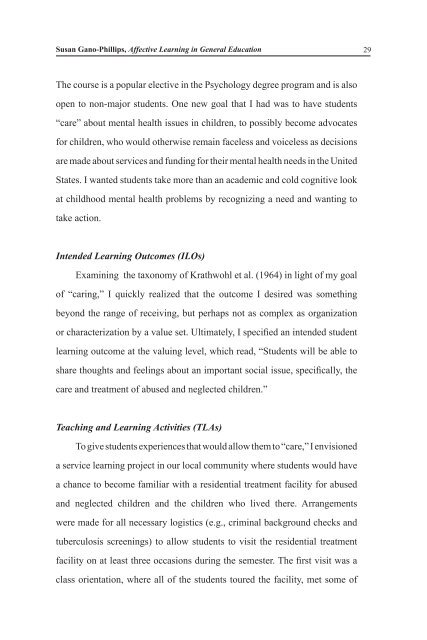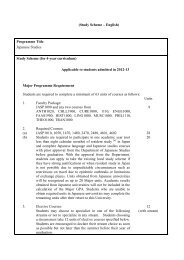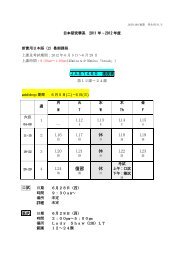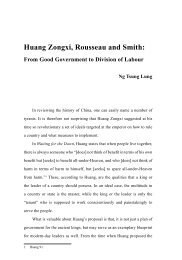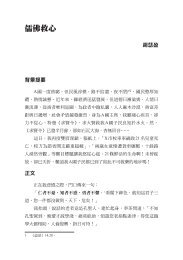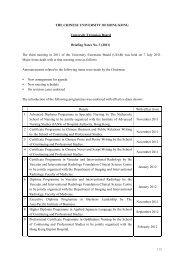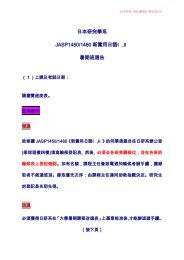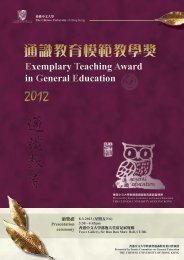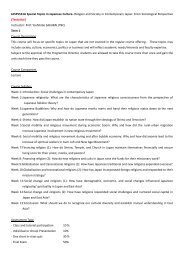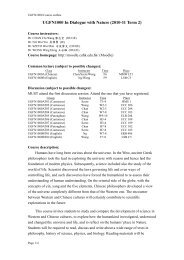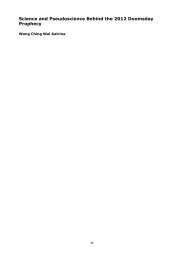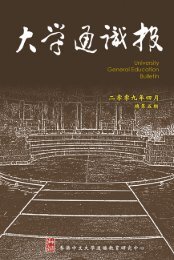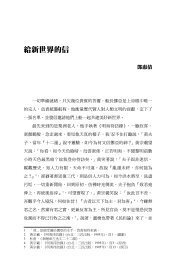ä¸è¼å ¨æ¸ - The Chinese University of Hong Kong
ä¸è¼å ¨æ¸ - The Chinese University of Hong Kong
ä¸è¼å ¨æ¸ - The Chinese University of Hong Kong
Create successful ePaper yourself
Turn your PDF publications into a flip-book with our unique Google optimized e-Paper software.
Susan Gano-Phillips, Affective Learning in General Education 29<br />
<strong>The</strong> course is a popular elective in the Psychology degree program and is also<br />
open to non-major students. One new goal that I had was to have students<br />
“care” about mental health issues in children, to possibly become advocates<br />
for children, who would otherwise remain faceless and voiceless as decisions<br />
are made about services and funding for their mental health needs in the United<br />
States. I wanted students take more than an academic and cold cognitive look<br />
at childhood mental health problems by recognizing a need and wanting to<br />
take action.<br />
Intended Learning Outcomes (ILOs)<br />
Examining the taxonomy <strong>of</strong> Krathwohl et al. (1964) in light <strong>of</strong> my goal<br />
<strong>of</strong> “caring,” I quickly realized that the outcome I desired was something<br />
beyond the range <strong>of</strong> receiving, but perhaps not as complex as organization<br />
or characterization by a value set. Ultimately, I specified an intended student<br />
learning outcome at the valuing level, which read, “Students will be able to<br />
share thoughts and feelings about an important social issue, specifically, the<br />
care and treatment <strong>of</strong> abused and neglected children.”<br />
Teaching and Learning Activities (TLAs)<br />
To give students experiences that would allow them to “care,” I envisioned<br />
a service learning project in our local community where students would have<br />
a chance to become familiar with a residential treatment facility for abused<br />
and neglected children and the children who lived there. Arrangements<br />
were made for all necessary logistics (e.g., criminal background checks and<br />
tuberculosis screenings) to allow students to visit the residential treatment<br />
facility on at least three occasions during the semester. <strong>The</strong> first visit was a<br />
class orientation, where all <strong>of</strong> the students toured the facility, met some <strong>of</strong>


